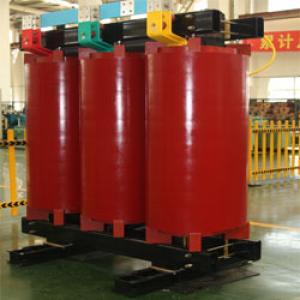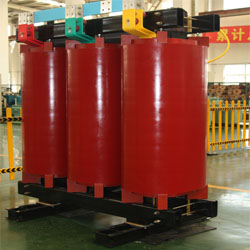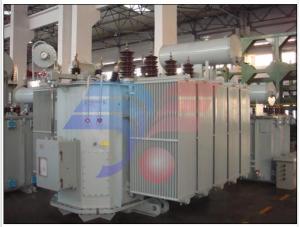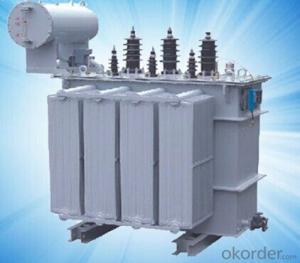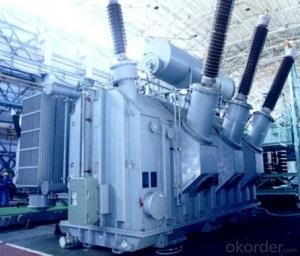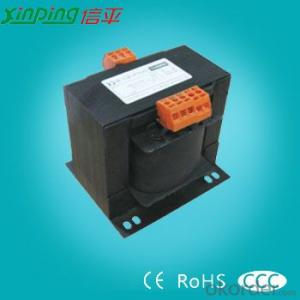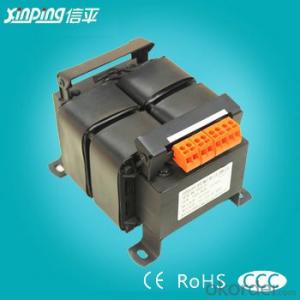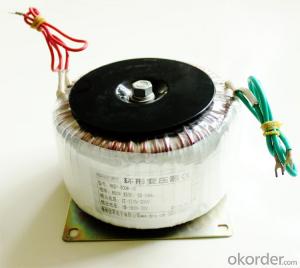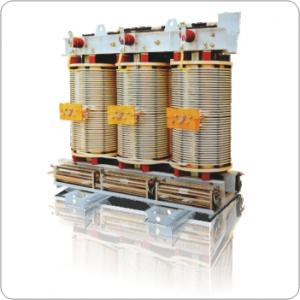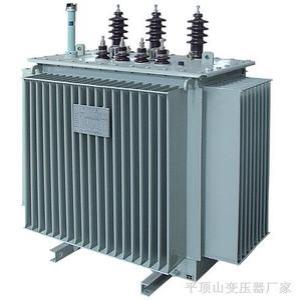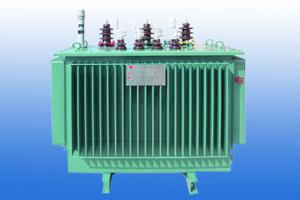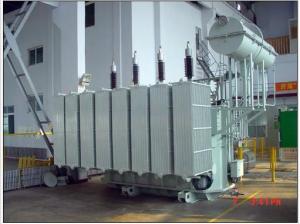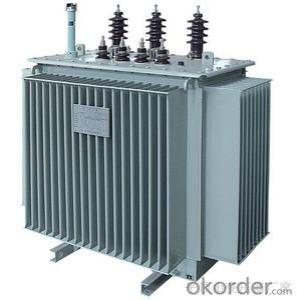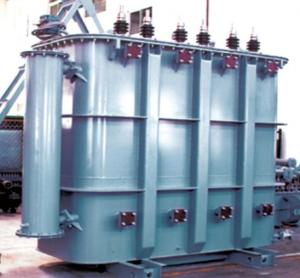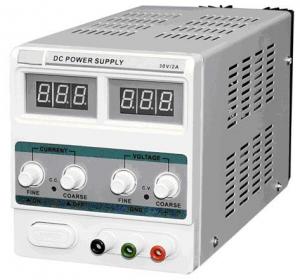SCB9 SCB10series of resin insulating dry-type transformer
- Loading Port:
- China Main Port
- Payment Terms:
- TT OR LC
- Min Order Qty:
- -
- Supply Capability:
- -
OKorder Service Pledge
OKorder Financial Service
You Might Also Like
SC(B)9/10-□/□ series of resin insulating dry-type transformer
1. Model
S---------------------------------three-phase
C----------------------------------solidification forming (epoxy resin cast)
B----------------------------------LV foil coil
9-----------------------------------performance code
□---------------------------------rated capacity (KVA)
□---------------------------------rated voltage (HV KV)
2. General
With the advanced technology brought in from overseas, we developed SC9、SCB9 series and SC10、SCB10 series padding thin-insulation dry-type distributing transformer whose winding is sealed up with epoxy, therefore the resin insulating dry-type transformer is flame-retardant, explosion-proof, free from maintenance and pollution, and it is compacted and can go deep into load center, besides, with scientific and reasonable design and coating craft work, it has advantages of low partial discharge capacity, low noise, good heat dispersion and it can run over a long time with 125% rated load in the circumstance of cold wind. It applies intelligent thermal controller and has the functions that it will alarm when there is fault or the temperature is exceeded and switch off as the function of “black box”. It can be monitored and controlled by connecting it to the computer through its RS485 serial interface.
Therefore, it is widely used in the places such as hotel, restaurant, airport, power plant, hospital, skyscraper, shopping center, and residential areas and other adverse environments like subways, smelt and power plant, ship, offshore drilling platform, etc.
1. Technical parameters
Rated capacity (KVA) | Voltage group(KV) | Vector group | Dissipation (KW) | No-load Current (%) | Impedance voltage (%) | Insulating level | Weight (kg) | ||
HV | LV | No-load | Load (120℃) | ||||||
10 | 11 10.5 10 6.6 6.3 6 | 0.4 | Dyn11 or Yyn0 | 0.15 | 0.325 | 7.2 | 4 | F/F | 130 |
30 | 0.215 | 0.75 | 3.2 | 260 | |||||
50 | 0.305 | 1.055 | 2.8 | 315 | |||||
80 | 0.415 | 1.460 | 2.6 | 470 | |||||
100 | 0.45 | 1.665 | 2.4 | 520 | |||||
125 | 5.30 | 1.955 | 2.2 | 585 | |||||
160 | 0.61 | 2.25 | 2.2 | 670 | |||||
200 | 0.70 | 2.675 | 2.0 | 790 | |||||
250 | 0.81 | 2.915 | 2.0 | 920 | |||||
315 | 0.99 | 3.67 | 1.8 | 1085 | |||||
400 | 1.10 | 4.22 | 1.8 | 1320 | |||||
500 | 1.305 | 5.165 | 1.8 | 1520 | |||||
630 | 1.46 | 6.31 | 1.6 | 6 | 1820 | ||||
800 | 1.71 | 7.36 | 1.6 | 2105 | |||||
1000 | 1.99 | 8.60 | 1.4 | 2550 | |||||
1250 | 2.35 | 10.26 | 1.4 | 2900 | |||||
1600 | 2.755 | 12.42 | 1.4 | 3490 | |||||
2000 | 3.735 | 15.30 | 1.2 | 4220 | |||||
2500 | 4.50 | 19.53 | 1.2 | 4955 | |||||
- Q: 50 What is the actual power of the transformer? Is 3 phase 50 or 3 together 50
- If it is three-phase transformer, the power of the brand name is the sum of the power of three phases
- Q: A step up transformer has 5,000 turns in the secondary coil and 200 turns in the primary coil. The primary is supplied with alternating current with an effective voltage of 900V. (A) What is the voltage in the secondary coil? (B) If the current in the secondary coil is 20A, what current flows in the primary coil? (C) What power is developed in the primary coil? (D) What power is developed in the secondary coil?
- a) (5,000/200) x 900V 22,500V. (5,000/200) 25:1. b) (20 x 25) 500A. c) (900 x 500) 450,000W. (22,500 x 20) 450,000W. (450KW). Both must be the same, if no losses.
- Q: Branch circuit cables are rated for 75?C and feeder cables are rated for90°C. This will be a 3-phase, 575-volt system with four induction motors, specified asfollows:Motor 1: 60 hp 0.90 p.f. squirrel cage motorMotor 2: 60 hp 0.90 p.f. squirrel cage motorMotor 3: 40 hp 0.85 p.f. wound rotor motorMotor 4: 7-1/2 hp 0.80 p.f. wound rotor motorA) Assuming no line losses, find the capacity of the transformer required to supplypower to this system.B) Assume that it is desired to improve the overall power factor for this system to 0.95lagging. Determine, in kVAR, the required capacitance for this power factorcorrection.C) Assume these motors have their windings connected in a delta configuration. Whatwould be the line voltage if they were connected in wye?
- I would look in the NEC for the full load amperes of these motor sizes. These are: 7.5 HP9 amps 40 HP.41 amps 60 HP.62 amps The 7.5 HP motor KVA will be KVA 575 * 9 * 1.732 8.9631 The 7.5 HP motor KW will be KW 575 * 9 * 1.732 * 0.8 7.17048 The KVAR of this motor is Sqrt(8.9631^2 - 7.1705^2) 5.3778 The 40 HP motor KVA will be KVA 575 * 41 * 1.732 40.8319 The 40 HP motor KW will be KW 575 *41 * 1.732 * 0.8 5 34.707115 The KVAR for this motor is Sqrt(40.8319^2 - 34.7071^2) 21.5095 The 60 HP motor KVA will be KVA 575 * 62 * 1.732 61.7458 The 60 HP motor KW will be KW 575 *62 * 1.732 * 0.8 5 55.5712 The KVAR for this motor is Sqrt(61.7458^2 - 55.5712^2) 26.9141 The total KVA requirement for all motors running at once is 8.9631 + 40.8319 + 61.7458 + 61.7458, which is 173.2866 KVA (note this is the requirement from a transformer, not the size of the transformer The total KW of all the motors is 7.1701 + 34.7071 + 55.5712 + 55.5712 153.0196 KW The total KVAR of all the motors is 5.3778 + 21,5095 + 26,9141 + 26.9141 80.7145 KVAR The power factor for all the motor is KW / KVA 153.0196 / 173.2866 0.883 I took a short cut at this point and used an application i wrote to calculate the required capacitor KVAR. The results follows: At 0.95 power factor, the motors' KVA will be 161.065 The motors' KW will be the same. The motors' KVAR will be 50.2926 The required capacitor's KVAR will be 53.988 The reactance of the capacitor will be 10.65 ohms The capacitance will be 3.49059248 E -4 Farads You can calculate these values as I did above, if you want to. EDIT Forgot the last answer. The line voltage is the same for both delta and wye. The leg voltage for the wye motor will be 575 / 1.732 331.98 volts TexMav
- Q: How to distinguish between large, medium and small transformers
- We usually put the capacity of 630kVA and below the transformer for the small transformer; 800-6300kVA transformer for the medium-sized transformer; 8000-63000kVA transformer for large transformers; 90000kVA transformer for large transformers. With the transformer capacity bigger and bigger, in the past that can only be called large-scale medium.
- Q: I am looking for a 220v transformer with these secondary voltages: 2x13v, 1x9v, 1x3vIt has to be at least 20va.I cant find this anywhere :/
- Unless okorder
- Q: I am re-winding transformers, and I was wondering if braided copper wire can be used for the secondary winding. I will be using large gauge wire (4-8 ga.) and I just need to know if the performance will be terrible if I do use it.
- Not ideally. You should be using solid lacquered or varnished wire.
- Q: I understand US voltage appliances use 2 x 110v hot leads to make 220v @ 60 Hz. The voltage in China is 220v @ 50 Hz. Would I have to get 2 step down transformers to make 2 x 110v hot leads? I found transformers making 220v @ 50 Hz to 110v @ 60 Hz, but only one lead. How can I make it work over there? I understand there are ranges at 220v made specifically for Europe and China at 220v, but I love this range. I want to use this range made for the US in China. What would be the way to do this? Any help would be grreatly appreciated!
- I appreciate your notion of taking a U.S. product and using it in China. Makes me warm all over with irony. If you don't have an answer here, try posting in the Engineering section. Good luck.
- Q: I want to make presentation about transformers, I need to know suitable definition.I also want to know the Major Components, and Protection devices.Thanks a lot
- It is about the heroic Autobots and the evil Decepticons, two factions of alien robots who can disguise themselves by transforming into everyday machinery. The Decepticons desire control of the AllSpark, the object that created their robotic race, with the intention of using it to build an army by giving life to the machines of Earth. They also have lasors and shields. Some also have machine guns and others have swords.
- Q: Will the 250KVA, 500KVA, 630KVA Van transformer size,
- 250KVA, 500KVA, 630KVA Van transformer size, size: length 4.6m, width 2.5m, 2.4m high. Transformer: Transformer (Transformer) is the use of electromagnetic induction principle to change the AC voltage of the device, the main components are primary coil, secondary coil and core (core). In electrical equipment and wireless circuits, commonly used as lifting voltage, matching impedance, safety isolation and so on. The main functions are: voltage conversion, current conversion, impedance conversion, isolation, voltage regulator (magnetic saturation transformer) and so on. According to the use can be divided into: distribution transformers, power transformers, sealed transformers, modular transformers, dry-type transformers, oil-immersed transformers, single-phase transformers, electric transformers, rectifier transformers.
- Q: If calculating the efficiency of a transformer with different frequencies,how can the frequency be altered? For the experiment the voltage applied will have to be constant, is this still possible? or what quantities will be kept constant? and which will be measured to calculate the efficiency? using PVI to then use %(Pout/Pin)*100 would mean measuring current and voltage, is this the best way?
- properly no rely what engineering considerable you elect, you may desire to take Calculus a million 2, Matrices, Differential Equations, Chemistry a million 2 with labs, Physics a million 2 (Electromagnetism). you do not easily declare your engineeing considerable till the top of Sophmore 300 and sixty 5 days in college. Junior 300 and sixty 5 days is once you would be formally enrolled in a considerable. once you word for college and choose a considerable, you at the instant are not easily enrolled in that considerable and you will nevertheless choose any considerable you prefer. they merely ask what considerable you have an interest in to verify you're taking the mandatory situations on your first 2 years earlier stepping into your considerable in Junior 300 and sixty 5 days. interior the 1st 2 years of taking chemistry, math, and physics, you may additionally take Intro to engineering(CAD), and a brilliant form of engineering classes and electives like Statics, Dynamics, power of fabric, Thermodynamics, Into to electric powered Engineering(Circuits), C++, or Fluids. those classes will help you make certain what direction to circulate in direction of. based on your description, you desire Mechanical or business Engineering. the two deal in convalescing performance of goods, machines, and approaches. the two have numerous math. the two prefer expertise of Physics and the two require you to be good in difficulty fixing.
Send your message to us
SCB9 SCB10series of resin insulating dry-type transformer
- Loading Port:
- China Main Port
- Payment Terms:
- TT OR LC
- Min Order Qty:
- -
- Supply Capability:
- -
OKorder Service Pledge
OKorder Financial Service
Similar products
Hot products
Hot Searches
